This article was medically reviewed by Brian Maloney, MD. Dr. Maloney is a double board certified Plastic Surgeon in Georgia and founder of The Maloney Center for Facial Plastic Surgery based in Atlanta. He completed his residency in Otolaryngology-Head and Neck surgery at SUNY Health Sciences Center in 1991. He was a 2016 MyFaceMyBody USA finalist for Plastic Surgery and named a 2014, 2015, and 2016 Top Health, Beauty & Fitness Expert by The Atlantan Magazine.
There are 16 references cited in this article, which can be found at the bottom of the page.
This article has been viewed 267,966 times.
Tonsillitis is the inflammation or swelling of the tonsils, two oval-shaped tissues found in the back of the throat. Most infections are caused by a common virus, but bacterial infections may also cause tonsillitis. Treatment of tonsillitis depends on the cause, so, swift and accurate diagnosis is key to recovery.[1] Knowing the symptoms and your personal risk factors can help you diagnose, and then recover from, a bout of tonsillitis.
Steps
Knowing the Symptoms
-
1Pay attention to physical symptoms. Tonsillitis has a variety of physical symptoms that are similar to that of a common cold or sore throat. If you notice any of the following you may be suffering from tonsillitis.[2]
- A sore throat that lasts longer than 48 hours. This is the primary symptom of tonsillitis and one of the first symptoms you will notice.[3]
- Difficulty swallowing
- Ear pain
- Headache
- Tenderness around the jaw and neck.
- A stiff neck.
-
2Know the symptoms in children. Tonsillitis is very common in children. If you're not diagnosing yourself but a child, remember children experience and express symptoms differently.[4]
- Children are more likely to experience nausea and stomach pangs when suffering from tonsillitis.
- If children are too young to express how they feel, you might notice drooling, a refusal to eat, and unusual fussiness.[5]
Advertisement -
3Check the tonsils for swelling and redness. Have a friend or family member check your tonsils for symptoms of tonsillitis. Or, if you suspect tonsillitis in a young child, check yourself.[6]
-
4Take your temperature. Fever is one of the earliest signs of tonsillitis. Take your temperature to gauge if you're suffering from a fever.[9]
- Thermometers can be purchased at most drug stores. It generally takes about of minute of placing the tip of the thermometer under your tongue before an accurate reading is present.
- If you're taking a child's temperature, always use a digital thermometer over a mercury one. If your child is under three, you may have to insert the thermometer in the rectum to get a proper reading as children in this age group may lack the ability to hold a thermometer in their mouths.[10]
- A normal temperature is anywhere from 97 to 99 °F (36.1 to 37.2 °C). Anything higher than this is considered a fever.
Visiting Your Doctor
-
1Make an appointment to see your doctor. If you think you may have tonsillitis, you might need special medication or even surgery to remove your tonsils. Only a doctor can tell you for sure and make an official medical diagnosis. Make an appointment with your general practitioner or an ear, nose, and throat specialist to get your condition evaluated. If your child is experiencing symptoms of tonsillitis, get an appointment with their pediatrician as soon as possible.[11]
-
2Prepare for your appointment. Your doctor will likely have a number of questions for you and will expect you to ask questions in return, so be prepared.[12]
- Know roughly when your symptoms began, if any over-the-counter pain relievers have improved symptoms, whether you've ever been diagnosed with tonsillitis or strep throat before, and if symptoms affect your sleep. These are things your doctor will want to know to help with diagnosis.
- Ask your doctor about the best course of treatment, how long test results will take, and when you can resume normal activities.[13]
-
3Get tested at the doctor's office. Your doctor will perform a variety of tests to diagnose tonsillitis.[14]
- First, there will be a physical exam. Your doctor will look in your throat, ears, and nose, listen to your breathing with a stethoscope, feel your neck for swelling, and check for enlargement of the spleen. This is a sign of mononucleosis, which also inflames tonsils.[15]
- Your doctor will probably take a throat swab. They will rub a sterile swab over the back of your throat to check for bacteria associated with tonsillitis. Some hospitals have equipment that can get results in minutes while, in other cases, you might have to wait 24 to 48 hours.[16]
- Your doctor may order a complete blood cell count (CBC). This provides a count on different types of blood cells, showing what levels are normal and what are below normal. This can indicate whether the infection is caused by a bacterial or viral agent. This is usually only used if the throat swab test is negative and the doctor wants to determine the precise cause of tonsillitis.[17]
-
4Treat your tonsillitis. Depending on the cause and severity, different treatments will be recommended by your physician.[18]
- If virus is the cause, at-home care is advised and you can expect to feel better in 7 to 10 days. Treatment is similar to the treatment of any cold. You should get rest, drink plenty of fluids, especially warm liquids, humidify the air and suck on lozenges, popsicles, and other foods that cool the throat.[19]
- If the infection is bacterial, you will likely be prescribed a round of antibiotics. Make sure to take all the medication as directed. Failure to do so can result in the infection getting worse or not healing.[20]
- If your tonsillitis is frequently occurring surgery to remove the tonsils might be a possibility. Tonsillitis is usually a one day surgery, meaning you will be home the same day you go in.[21]
Assessing Your Risk
-
1Understand tonsillitis is highly contagious. The germs that cause bacterial and viral tonsillitis are very contagious. You may be at higher risk for tonsillitis under certain conditions.[22]
- If you've been sharing food and beverages with others, such as at parties and other get togethers, you could have easily contracted the germs. This heightens your risk and increases the likelihood the symptoms you're experiencing are related to tonsillitis.
- Nasal obstructions, those severe enough to cause you to breathe through your mouth, heighten your risk for tonsillitis. Droplets of pathogens pass through the air when an infected person breaths, coughs, and sneezes. Breathing through your mouth increases the risk for tonsillitis.[23]
-
2Know what factors put you at greater risk. While anyone who still has their tonsils is at risk for tonsillitis, certain factors increase your risk.
- Smoking can increase your risk as it leads to more frequent mouth-breathing and reduces the body's capacity to fight disease.
- Excessive alcohol use lowers the immune system, making you more susceptible to disease.When drinking, people are also looser about drink sharing. This can lead to infection.
- Any condition that weakens the immune system puts you at greater risk, such as HIV/AIDS and diabetes.
- If you've recently underdone an organ transplant or chemotherapy you may be at greater risk.
-
3Be aware of tonsillitis in children. While you can get tonsillitis at any age, infection is more frequent in children than adults. If you work with young children you may be at a higher risk.[24]
- Tonsillitis is most common in pre-school years to mid-teenage years. One reason for this is the close proximity of school-aged children that leads to the sharing of disease-causing germs.
- If you work in an elementary or middle school, you are at an increased risk for tonsillitis. Wash your hands frequently during an outbreak and avoid contact with anyone diagnosed for a 24 hour period.[25]
Warnings
- If you experience difficulty breathing, drooling, or a fever over 101 degrees seek immediate medical attention as this indicates a condition more serious than tonsillitis.⧼thumbs_response⧽
References
- ↑ http://www.mayoclinic.org/diseases-conditions/tonsillitis/basics/definition/con-20023538
- ↑ https://www.nhs.uk/conditions/tonsillitis/
- ↑ http://www.mayoclinic.org/diseases-conditions/tonsillitis/basics/symptoms/con-20023538
- ↑ https://kidshealth.org/en/parents/tonsillitis.html
- ↑ http://www.mayoclinic.org/diseases-conditions/tonsillitis/basics/symptoms/con-20023538
- ↑ https://medlineplus.gov/tonsillitis.html
- ↑ http://www.nlm.nih.gov/medlineplus/ency/article/001043.htm
- ↑ http://www.mayoclinic.org/diseases-conditions/tonsillitis/basics/symptoms/con-20023538
- ↑ https://www.nhsinform.scot/illnesses-and-conditions/ears-nose-and-throat/tonsillitis
- ↑ https://www.healthychildren.org/English/health-issues/conditions/fever/Pages/How-to-Take-a-Childs-Temperature.aspx
- ↑ https://kidshealth.org/en/parents/tonsillitis.html
- ↑ https://www.mayoclinic.org/diseases-conditions/tonsillitis/symptoms-causes/syc-20378479
- ↑ http://www.mayoclinic.org/diseases-conditions/tonsillitis/basics/preparing-for-your-appointment/con-20023538
- ↑ https://familydoctor.org/condition/tonsillitis/
- ↑ http://www.mayoclinic.org/diseases-conditions/tonsillitis/basics/tests-diagnosis/con-20023538
- ↑ http://www.mayoclinic.org/diseases-conditions/tonsillitis/basics/tests-diagnosis/con-20023538
- ↑ http://www.mayoclinic.org/diseases-conditions/tonsillitis/basics/tests-diagnosis/con-20023538
- ↑ https://www.mayoclinic.org/diseases-conditions/tonsillitis/diagnosis-treatment/drc-20378483
- ↑ http://www.mayoclinic.org/diseases-conditions/tonsillitis/basics/treatment/con-20023538
- ↑ http://www.mayoclinic.org/diseases-conditions/tonsillitis/basics/treatment/con-20023538
- ↑ http://www.mayoclinic.org/diseases-conditions/tonsillitis/basics/treatment/con-20023538
- ↑ https://my.clevelandclinic.org/health/diseases/21146-tonsillitis
- ↑ http://www.mayoclinic.org/diseases-conditions/tonsillitis/basics/risk-factors/con-20023538
- ↑ https://medlineplus.gov/tonsillitis.html
- ↑ http://www.mayoclinic.org/diseases-conditions/tonsillitis/basics/risk-factors/con-20023538
About This Article
If you think you have tonsillitis, check for red and swollen tonsils by gently placing the handle of a spoon on your tongue and saying “ahh.” Either have someone else look at your tonsils for you or use a mirror and a light shining on the back of your throat. You can get an idea of how tonsils should look by looking at a healthy friend or family member’s. The first symptom you’ll notice from tonsillitis will be a sore throat that lasts for longer than 48 hours, but you might also have a fever, ear pain, headache, and stiff neck. If you think a child might have tonsillitis, look for nausea, drooling, and a refusal to eat. For more help from our Medical co-author, including how to avoid infecting others, read on!


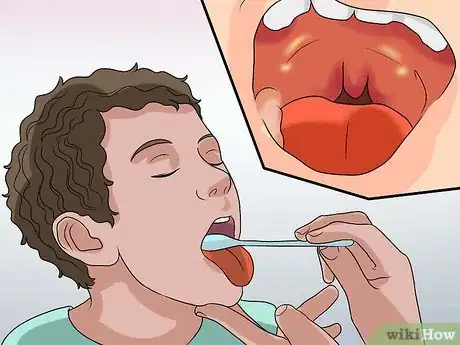
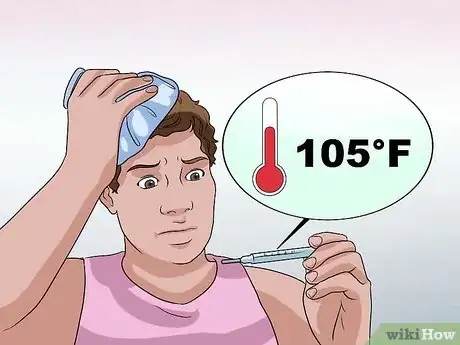

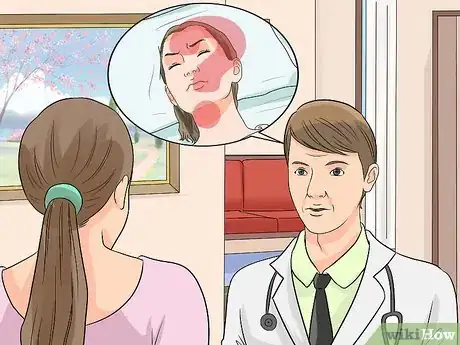
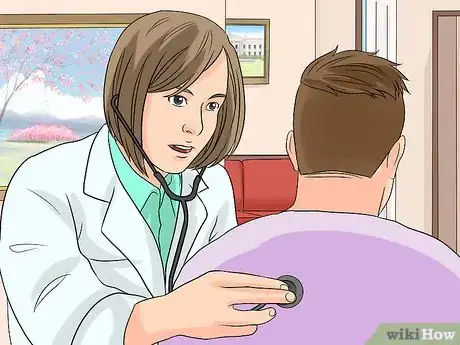

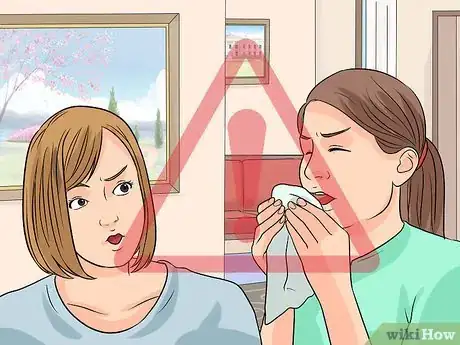
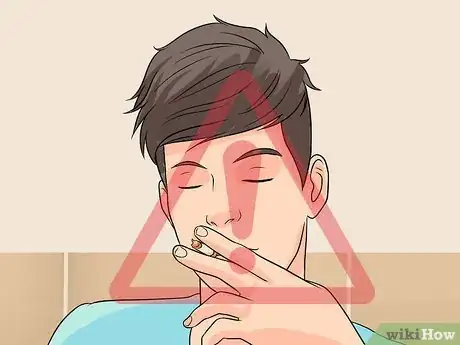

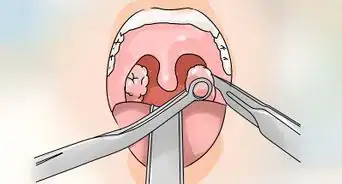
-Step-17-Version-2.webp)






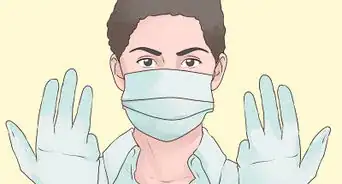













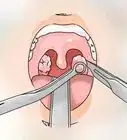
-Step-17-Version-2.webp)





































Medical Disclaimer
The content of this article is not intended to be a substitute for professional medical advice, examination, diagnosis, or treatment. You should always contact your doctor or other qualified healthcare professional before starting, changing, or stopping any kind of health treatment.
Read More...